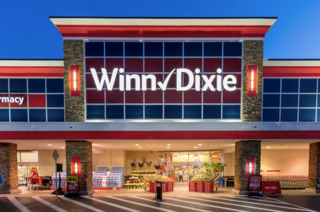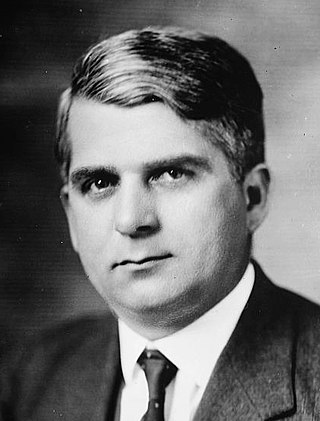
A grocery store (AE), grocery shop (BE) or simply grocery is a foodservice retail store that primarily retails a general range of food products, which may be fresh or packaged. In everyday U.S. usage, however, "grocery store" is a synonym for supermarket, and is not used to refer to other types of stores that sell groceries. In the UK, shops that sell food are distinguished as grocers or grocery shops.

Loblaw Companies Limited is a Canadian retailer encompassing corporate and franchise supermarkets operating under 22 regional and market-segment banners, as well as pharmacies, banking and apparel. Loblaw operates a private label program that includes grocery and household items, clothing, baby products, pharmaceuticals, cellular phones, general merchandise and financial services. Loblaw is the largest Canadian food retailer, and its brands include President's Choice, No Name and Joe Fresh. It is controlled by George Weston Limited, a holding company controlled by the Weston family; Galen G. Weston, is the chair of the Loblaw board of directors, as well as chair of the board of directors and CEO of Canada-based holding company George Weston.

Save A Lot Food Stores Ltd. is an American discount supermarket chain store headquartered in St. Ann, Missouri, in Greater St. Louis. It has about 900 independently owned and operated stores across 32 states in the United States with over $4 billion in annual sales.

Winn-Dixie Stores, Inc., styled as Winn✓Dixie, is an American supermarket chain headquartered in Jacksonville, Florida. It operates more than 546 stores in Louisiana, Mississippi, Alabama, Georgia, and Florida. The company has had its present name since 1955 and can trace its roots back to 1925.

Clarence Saunders was an American grocer who first developed the modern retail sales model of self service. His ideas have had a massive influence on the development of the modern supermarket. Saunders worked for most of his life trying to develop a truly automated store, developing Piggly Wiggly, Keedoozle, and Foodelectric store concepts.
The Nash Finch Company was a Fortune 500 company based in Edina, Minnesota, United States. The company was involved in food distribution to private companies, primarily independent supermarkets, and military commissaries; and the operation of retail stores.

Grand Union Supermarkets, later known as Grand Union Family Markets and often referred to simply as Grand Union, is an American chain of grocery stores that does business in upstate New York and Vermont, and used to do business throughout most of the northeastern United States. It operated stores in other areas of the country including the midwestern and southeastern states, and internationally in the Caribbean and Canada. The company was founded and headquartered in Scranton, Pennsylvania, and moved to Brooklyn, New York, in the early 20th century. Grand Union moved again to Elmwood Park, New Jersey and finally to Wayne, New Jersey before the company was forced into Chapter 7 bankruptcy in 2001 and sold to C&S Wholesale Grocers.

Lucky Stores is an American supermarket chain founded in San Leandro, California, in 1935. Lucky is currently operated by Albertsons in Utah and Save Mart Supermarkets in Northern California.

Southern Family Markets, headquartered in Birmingham, Alabama, was a chain of American supermarkets owned and operated by C&S Wholesale Grocers, a distributor based in Keene, New Hampshire. The chain was operated as an affiliate of C&S. Southern Family Markets had operated a varying number of supermarkets and 10 liquor stores under the banners Southern Family Markets, Piggly Wiggly, Bruno's, and Food World. The liquor stores, all located along the gulf coast, were called SFM Liquors.

Jitney Jungle was a chain of supermarkets that began in Jackson, Mississippi, in 1919. It was a private Forbes 500 company and one of the largest privately held grocery store chains in the United States. It was acquired by Winn-Dixie in 2000.

Food 4 Less is the name of several grocery store chains, the largest of which is currently owned by Kroger. It is a no-frills grocery store where the customers bag their own groceries at the checkout. Kroger operates Food 4 Less stores in the Chicago metropolitan area and in Southern California. Kroger operates their stores as Foods Co. in northern and central California, including Bakersfield and the Central Coast, because they do not have the rights to the Food 4 Less name in those areas. Other states, such as Nevada, formerly contained Kroger-owned Food 4 Less stores.

C&S Wholesale Grocers is a national wholesale grocery supply company in the United States, based in Keene, New Hampshire. In 2021 it was the eighth-largest privately held company in the United States, as listed by Forbes. C&S operates and supports corporate grocery stores and services independent franchisees under a chain-style model throughout the Midwest, South and Northeast. C&S owns the Piggly Wiggly grocery brand, which is independently franchised to store operators, the Grand Union supermarkets brand, as well as several private label brands, including Best Yet.
Bruno's Supermarkets, LLC was an American chain of grocery stores with its headquarters in Birmingham, Alabama.

BI-LO was an American supermarket chain owned by Southeastern Grocers, headquartered in Jacksonville, Florida. At the time of the banner’s elimination, supermarkets under the BI-LO brand were operated in Georgia, South Carolina, and North Carolina.
Homeland is a supermarket chain in the United States. Homeland is the main supermarket banner of Homeland Acquisition Corporation, the supermarket banner's parent company, and the names are often used interchangeably. Homeland's headquarters is in Oklahoma City, Oklahoma. As of 2019, it operates 79 supermarkets in Oklahoma, Kansas, Georgia and Texas. Many of H.A.C., Inc.'s supermarkets also include pharmacies and fuel centers. In 2019, Homeland purchased the remaining Oklahoma Food Pyramid stores from Rogersville, Missouri based Pyramid Foods which owns Price Cutter and Ramey.

Food Fair, also known by its successor name Pantry Pride, was a large supermarket chain in the United States. It was founded by Samuel N. Friedland, and his brother George I. Friedland who opened the first store in Harrisburg, Pennsylvania, in the late 1920s. As of 1957, Food Fair had 275 stores, and at its peak, the chain had more than 500 stores. Friedland's family retained control of the firm through 1978, when the chain entered bankruptcy.
Charles Lanham Crouch was an American merchandising executive best known as a cofounder of the supermarket chain that became Lucky Stores.
Piggly Wiggly Carolina Co. was a franchise of the Piggly Wiggly chain of supermarkets, based in South Carolina in the United States. The company entered a process of disposal of assets and dissolution in 2014.

Belle Foods, LLC was a family-owned chain of American supermarkets headquartered in Birmingham, Alabama. The company had a relatively short lifespan. It began operating its rebranded Bruno's and Food World and Piggly Wiggly Stores on July 1, 2012, but filed for bankruptcy just one year later. Before owners Bill White and Jeff White purchased the stores from Southern Family Markets in mid-2012, the 57-store grocery chain employed approximately 3,000 people.

Southeastern Grocers is an American supermarket portfolio headquartered in Jacksonville, Florida. The portfolio was created by Lone Star Funds in September 2013 as the new parent company for Harveys, Winn-Dixie, and Fresco y Más. Southeastern Grocers was rated #31 in the Forbes 2015 ranking of America's Largest Private Companies. In February 2017, Anthony Hucker was appointed as president and CEO of Southeastern Grocers. On August 16, 2023, the company announced its intention to sell all Winn-Dixie and Harveys stores to German supermarket chain Aldi, and all locations will either remain open under their respective brands or convert into the ALDI brand. SEG has also agreed to divest its Fresco y Más operations, via a sale of the banner that the company expects to close in the first quarter of 2024. The Fresco y Más banner, including all 28 stores and four pharmacies, will be sold to Fresco Retail Group LLC, an investment group focused on food and grocery. Fresco Retail Group, LLC plans for all stores and pharmacies in the Fresco y Más banner to continue operating as they are presently.



















